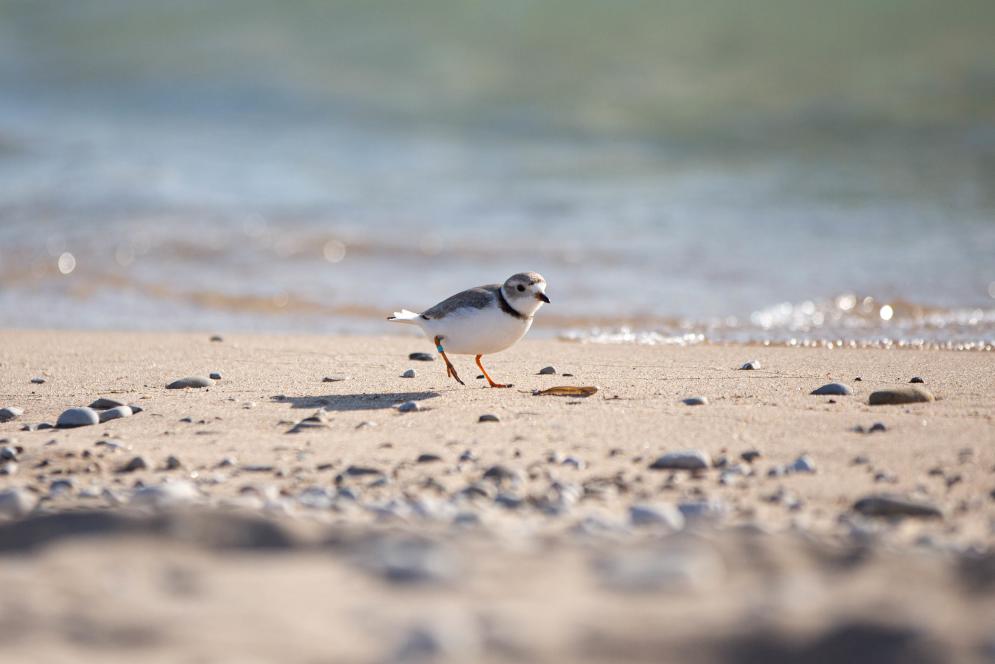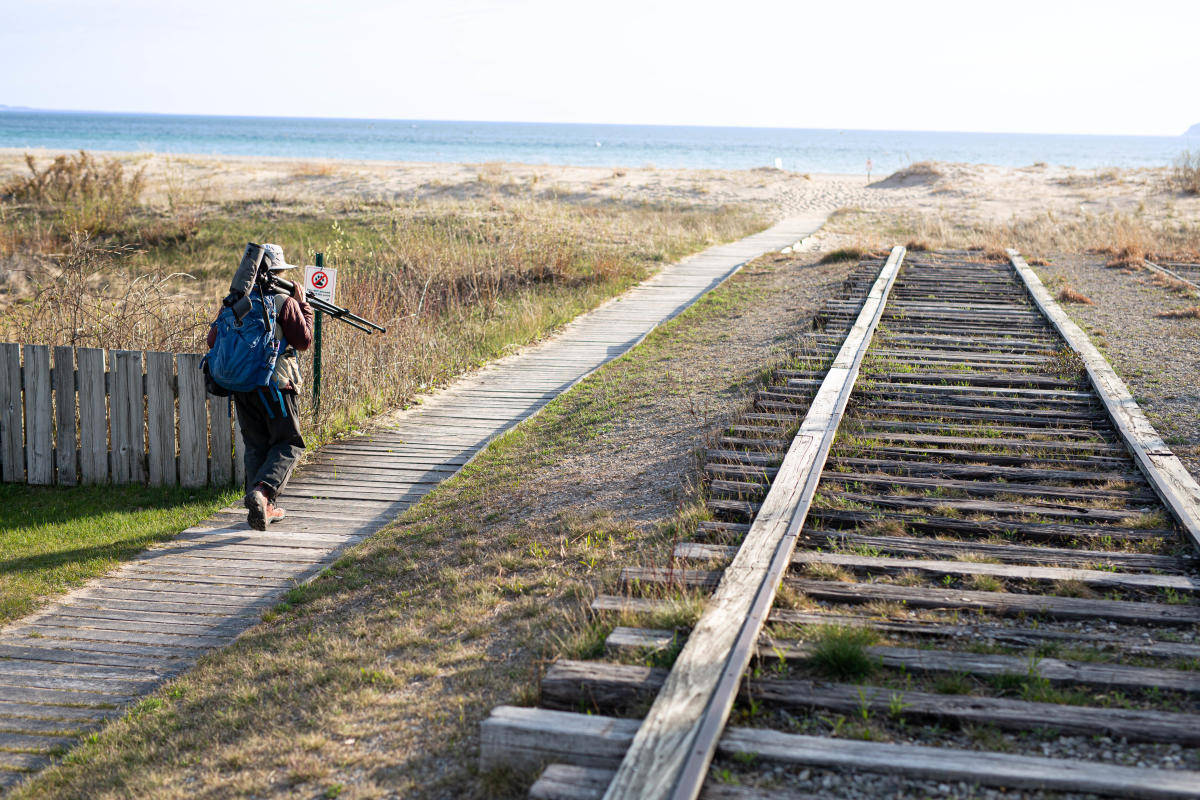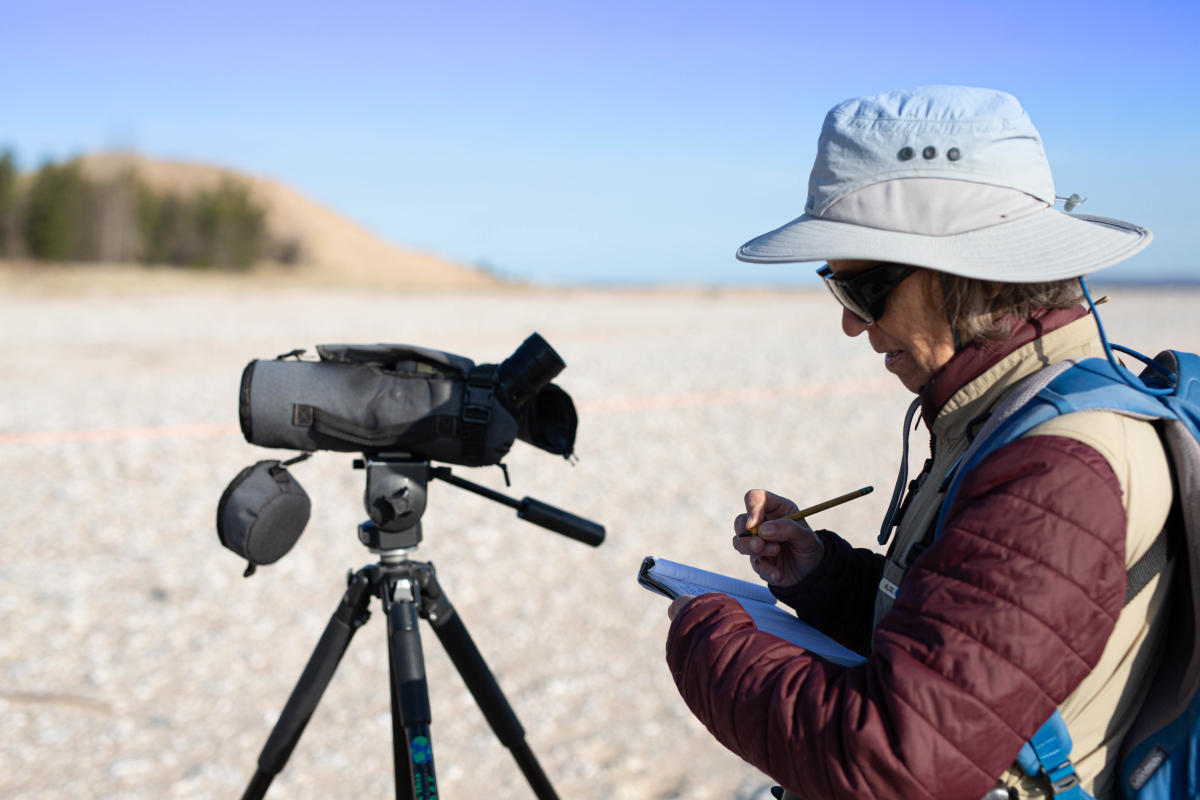
Alice Van Zoeren stands to watch on the sands of Sleeping Bear Dunes National Lakeshore. She has come to these shores for 17 years as a guardian. She searches to find, defend and protect the endangered bird known as the Piping Plover.
These little birds weigh as much as two AA batteries. They nearly disappeared from the Great Lakes in the mid-1980s, but thanks to monitors like Van Zoeren they are on the rebound. Now about 75 pairs of the birds call the Great Lakes home, and their highest concentration is in Sleeping Bear, including North and South Manitou Islands. In fact, about half of the known nesting pairs call this area their summer home.
Protecting the Piping Plover is no small task since the bird's nest is in some of the favorite locations for humans and predatory animals: the Great Lakes beaches. “The chicks can’t fly for the first 25 days and that’s when they are most vulnerable,” said Dr. Sarah Saunders, a Quantitative Ecologist at the National Audubon Society.


Saunders said their greatest threat could be man’s best friend, the dog. When dogs are off-leash along the shoreline, they can damage eggs, attack chicks, or scare the adult birds away from the nest. “The rule of thumb is to stay 100 feet from nesting birds,” said Saunders. “We need to give the birds space to nest and rest.”
The Piping Plover is a creature of habit and will often nest along the same beach year after year. That allows plover monitors, like Van Zoeren, to track most, if not all the new nests at Sleeping Bear Dunes National Lakeshore. Then once identified they will set up a four-foot protective cage, called an exclosure, around the nest. The exclosure allows the Plover to leave the nest but protects against predators. Areas around the nests are roped off with signs clearly posted to keep a safety barrier around the nest. The rule of thumb is to stay at least 100 feet away from the nests.

“Piping Plovers are an important part of the Great Lakes ecosystem,” said Saunders. “We all rely on clean water and a healthy environment, and so does the Piping Plover. It shows our interconnectedness with all of us on the earth. It comes full circle.”
For Van Zoeren and other Piping Plover guardians, the protection of these birds is personal. They know these birds almost like they are family. The monitors give them names and watch them grow. “It’s addictive,” said Van Zoeren. “It’s fascinating. You get to know the individual birds and not just their species.” But Van Zoeren is keenly aware the effort to protect the bird is a huge group effort that includes programs with the National Park Service, Great Lakes Restoration Initiative, the University of Minnesota, Audubon Great Lakes, and others.


Progress has been made since the 1980s when only 17 Piping Plovers pairs existed in the Great Lakes. That number is up to 75 now, about halfway to the federal recovery goal of 150 pairs. There is still a long way to go, and you can help by following a few simple guidelines set by Audubon Great Lakes and the National Park Service:
- Keep dogs on a leash when on trails or shoreline, where dogs are allowed.
- Give birds 100 feet of space and stay clear from designated Piping Plover nesting areas.
- Stay on marked trails.
- Read, understand and take the Piping Plover Pledge. https://act.audubon.org/a/pledge-protect-great-lakes-piping-plovers
Find more information at: http://www.greatlakespipingplover.org/.
@traversecitytourism Love the beach? Share the love! #traversecity #sleepingbeardunes #birdsoftiktok #birdtok #pipingplover ♬ presave golden years - christian french


